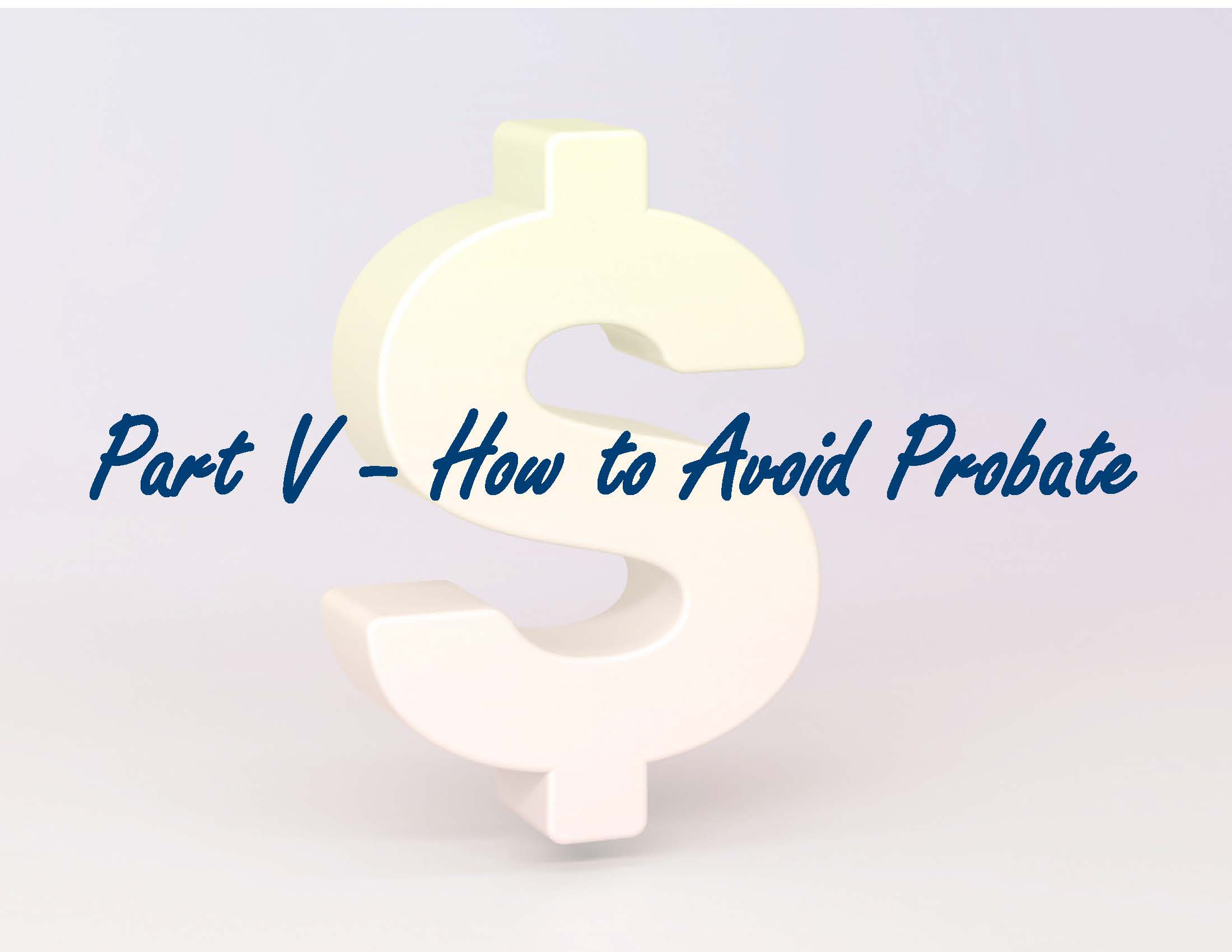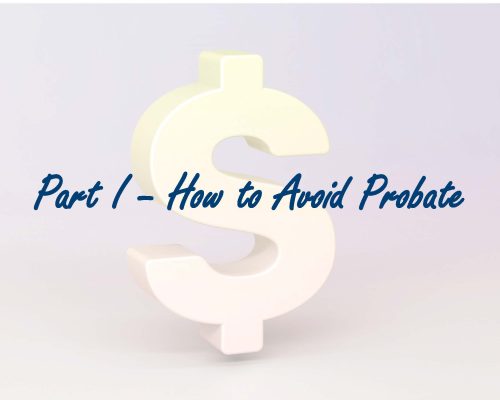Avoid Probate No. 5 – Joint Tenancy Part C
- Explaining that all three types of joint tenancy look identical, and how your intention is the determining factor
- Explaining the legal presumption if your intention is not clear
- Explaining how to ensure your intention is clearly set out
This is the fifth column of a series about avoiding probate, prompted by a challenge from a reader who believes that lawyer “estate chasers” are the new “ambulance chasers”. If there’s no estate, there’s no probate. Lawyers can’t “get rich” (his words) representing those who are fighting over a non-existent estate.
The first two columns had to do with eliminating your wealth before you die. I started with my favourite: spend your money while you can enjoy it. Then I moved on to giving it away while you’re alive rather than leaving an inheritance to be enjoyed after you’re dead.
I then started a three-column mini-series about joint tenancy, which is one of the ways that wealth can be passed to your intended beneficiaries outside of your estate.
Joint tenancy cheats the government out of their probate fees. It also pulls the asset away from the line of fire of an estate fight. It does this with its distinctive “right of survivorship” where the deceased’s title is extinguished on death leaving title with the surviving joint tenant.
If you haven’t been following along, please go back and read from the start of the series. If you have trouble finding those previous columns let me know and I’ll help you.
In the first two columns of the joint tenancy mini-series, I explained the concept of “beneficial interest” and differentiated the three types of joint tenancy, giving them meaningful labels:
- Shared Ownership with Survivorship, which is the most common way that spouses own property together. Each of them has beneficial ownership and the survivor becomes the sole owner after the other dies.
- Survivorship-Only Ownership, which could be created by a parent transferring title from themselves, to themselves and a child in joint tenancy. Only the parent has a beneficial interest in the property while they’re alive, but the child becomes the sole beneficial owner when the parent dies.
- Name-Only Ownership, which is identical to Survivorship-Only Ownership except that the child ends up owning the property in name-only, holding it for the benefit of the parent’s estate.
All three types of joint tenancy look identical on title. The names of the owners are listed, following the words “as joint tenants”.
And all three can be created by the identical mechanism of a sole owner transferring title from themselves to themselves and another (or others), in joint tenancy, with no money changing hands.
This is going to kill you, but the way we determine which type of joint tenancy is created is by determining the original owner’s intention.
If there’s no evidence to prove a contrary intention, the law presumes Name-Only Ownership which defeats the purpose of using joint tenancy to avoid a fight over the estate.
You might wonder why anyone would want to use the Name-Only Ownership type of joint tenancy for estate planning purposes.
Consider a parent with three children who wants to avoid the legal expense, time delays and probate fees associated with probate. Their home is their only asset and they want it to go to their three children. If one of their children pre-deceases them, they want that share to go to the deceased child’s children (the grandchildren).
The Survivorship-Only Ownership type of joint tenancy could go sideways if one of their children does die before they do. When the parent dies, with only the two other children as joint tenants, those two children will end up owning the property with nothing going to those grandchildren.
On the other hand, with Name-Only Ownership, the two surviving children will own the property on behalf of the estate and must deal with that property according to parent’s will. No probate is required because the property is not in the deceased parent’s name, so all the expense and time delay of probate is avoided but the parent’s wishes as set out in their will are followed.
It’s critically important, when transferring property into joint tenancy, to be very clear about your intention. This can be accomplished with something called a Statutory Declaration where you very clearly set out your intention.
Intention is also important when adding a child to your bank account, though banks make it easier with forms that clearly set out what happens on death. Please consider carefully what you want to occur after you die and ensure that the bank documentation follows those wishes.
If adding only one of your children to your account so they can help you with your finances, you might want them to be the sole owner of whatever’s left in that account on your death. Or you might want those funds to be included with the rest of your estate to be distributed according to your will.
I’ve handled what seemed like a weird situation where the deceased and two children were named on a parent’s bank account and on death, the two children were each paid out 1/3 with the remaining 1/3 having to go through probate. I question whether that had been the parent’s intention.
As you can see, this stuff can get complicated. Please consult with a lawyer to ensure an estate plan that will accomplish what you intend. I’m not currently looking for estate planning business but can put you in touch with lawyers I have confidence in who can help you.




